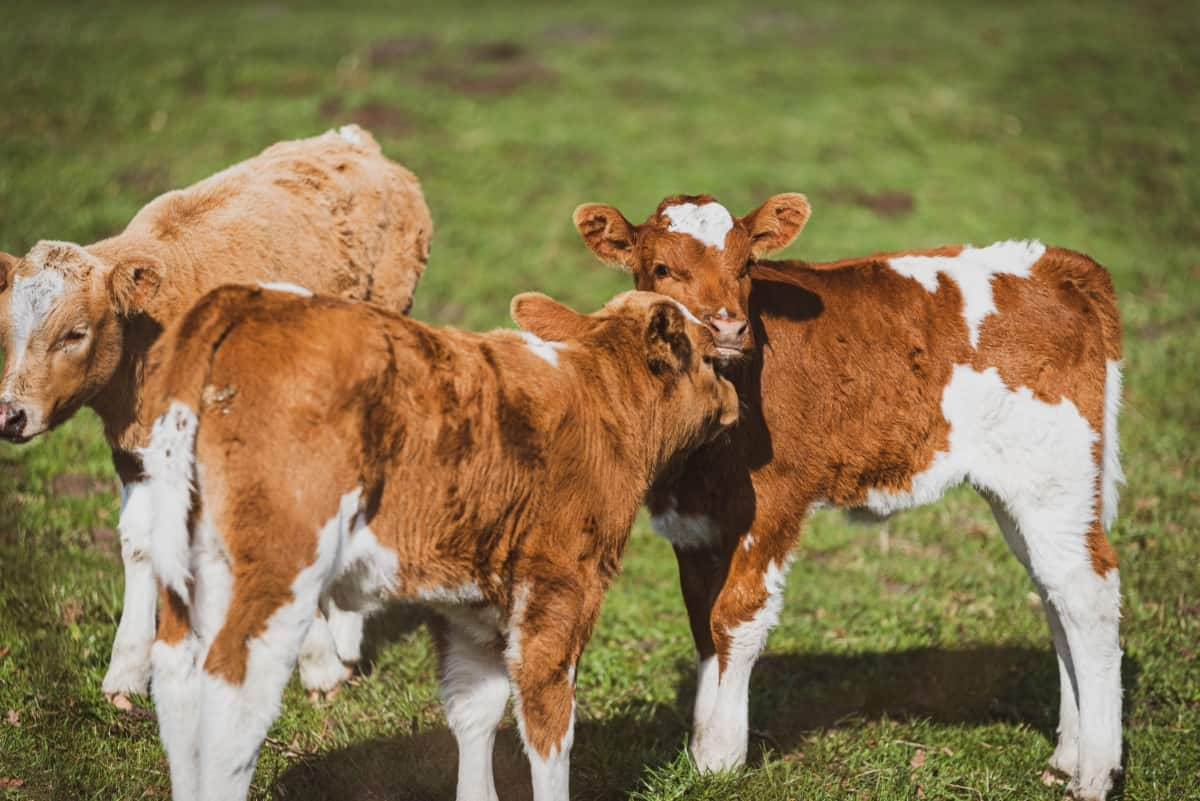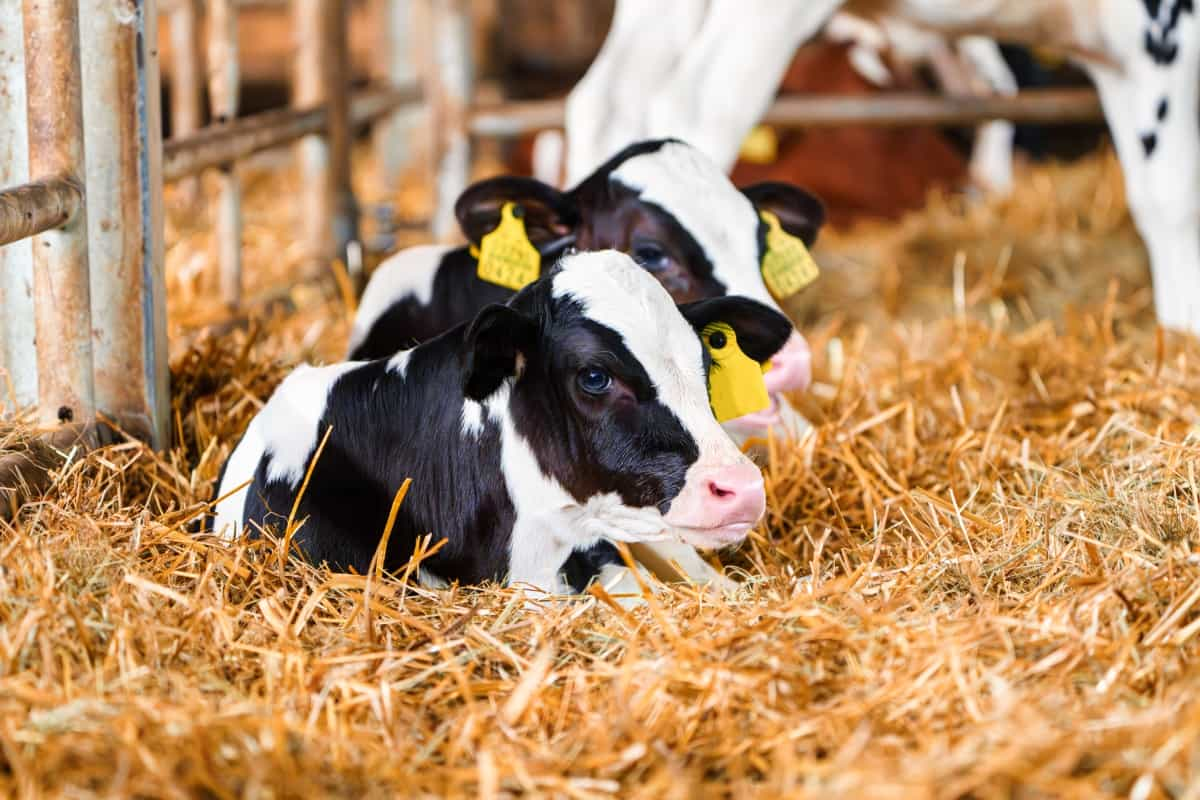Calf buyback programs are innovative partnerships between livestock producers and beef marketers aiming to maximize herd potential and ensure a steady supply of high-quality beef to the premium beef market. These programs often focus on beef genetics improvement, such as those seen with HeartBrand Ranch Akaushi cattle, to produce DNA-verified calves that meet stringent quality criteria, including no hormone implants and superior carcass quality improvement.
Farmers can tap into feeder cattle premiums, enhance their beef herd upgrading efforts, and contribute to sustainable beef production by participating. With a focus on breeds like Akaushi, known for their exceptional beef marbling, these programs support commercial beef production while catering to upscale restaurant beef supply, directly influencing the beef export market with high-quality beef breeds.
What are Calf Buyback Programs?
Calf buyback programs are agreements where beef producers commit to specific breeding and management practices to raise calves that meet predefined genetic and quality standards in return for guaranteed purchase at a premium by the program initiator. These programs are designed to foster beef genetics improvement, ensuring that calves produced under these schemes contribute to the upscale premium beef market, often requiring DNA-verified calves to maintain the integrity and traceability of the beef supply chain.
Benefits of Participating in Calf Buyback Programs
Participating in calf buyback programs offers many benefits, including access to feeder cattle premiums, which incentivize producers to focus on carcass quality improvement and beef herd upgrading. These programs often provide technical support for beef genetics improvement, aligning with sustainable beef production goals and opening doors to direct beef marketing channels.

For producers, this translates into higher profitability, enhanced herd genetics, and a stable outlet for their high-quality calves, particularly those from high-quality beef breeds like the Akaushi, renowned for their exceptional beef marbling and tenderness.
Calf Buyback Programs
Understanding the Basics of Beef Genetics
The Role of Genetics in Beef Quality
Genetics plays a pivotal role in determining beef quality, influencing traits such as marbling, tenderness, and overall carcass quality. Programs focused on beef genetics improvement aim to enhance these traits, ensuring that each generation of calves contributes positively to the premium beef market. Producers can ensure that their herds contribute to the high standards expected in upscale restaurant beef supply and export markets by selecting superior genetics.
How Genetic Improvement Affects Your Herd
Genetic improvement within a herd leads to higher-quality beef, better feedlot performance data, and improved sustainability in beef production. Through careful selection and breeding techniques, producers can elevate the genetic profile of their herd, resulting in calves that achieve higher market premiums and meet the stringent requirements of calf buyback programs, ultimately driving profitability and long-term success in commercial beef production.
Spotlight on HeartBrand Ranch’s Akaushi Program
The Akaushi Advantage: Marbling, Tenderness, and Quality
HeartBrand Ranch’s Akaushi program exemplifies the potential of focused genetic improvement, with Akaushi cattle renowned for their exceptional beef marbling, tenderness, and quality. These characteristics make Akaushi beef highly sought after in the premium beef market, offering a clear advantage for producers involved in calf buyback programs that prioritize these traits.
HeartBrand Ranch: A Case Study in Excellence
HeartBrand Ranch has become a case study in excellence within the industry, demonstrating how dedicated breeding and management practices can significantly improve beef quality. By adhering to strict guidelines and focusing on the unique genetics of Akaushi cattle, HeartBrand Ranch has successfully navigated the upscale restaurant beef supply chain, contributing to the broader goals of carcass quality improvement and sustainable beef production.
Qualifying for a Calf Buyback Program
The Importance of DNA Verification
DNA verification is a critical component of calf buyback programs, ensuring the genetic purity and traceability of calves within the program. This process verifies that the calves meet the genetic standards required for premium beef production, enabling producers to qualify for the associated premiums and benefits of the program.
Guidelines and Requirements for Participation
To participate in a calf buyback program, producers must adhere to specific guidelines and requirements, including breeding practices that align with beef genetics improvement and management practices that ensure the health and well-being of the calves. These requirements often include no hormone implants and adherence to sustainable beef production practices, ensuring that the calves produced are of the highest quality and meet the stringent standards of the premium beef market.
In case you missed it: Wagyu Cattle: Ultimate Guide Raising, Breed Profile Facts, and Farming Practices

The Economics of Calf Buyback Programs
Calculating the Premiums: Understanding Your Potential Earnings
Participation in calf buyback programs can lead to significant premiums for producers, with earnings potential directly tied to the quality and genetics of the calves produced. By understanding the specific criteria for these premiums, such as carcass quality and feedlot performance data, producers can strategically manage their herds to maximize their return on investment.
Costs Involved: DNA Testing and Other Considerations
While the potential for higher earnings is significant, producers must also consider the costs of participating in calf buyback programs, including DNA testing and adherence to specific breeding and management practices. These costs, however, are often offset by the higher premiums earned for calves that meet the program’s standards, making participation a financially viable option for many producers.
Management Practices for Success
Best Practices for Raising High-Quality Calves
Successful participation in calf buyback programs requires adherence to best management practices, including optimal nutrition, health care, and breeding strategies. These practices not only enhance the quality and performance of the calves but also contribute to the overall sustainability and profitability of the operation.
The Impact of No Hormone Implants on Your Herd
One of the key requirements of many calf buyback programs is the exclusion of hormone implants in calf rearing. This practice aligns with the growing consumer demand for naturally raised beef. It can positively impact the health and quality of the herd, further contributing to the success of producers in premium beef markets.
Crossbreeding Strategies for Improved Genetics
Angus and Akaushi: A Winning Combination
Crossbreeding strategies, such as combining Angus-based herds with Akaushi genetics, can offer significant benefits regarding beef quality and genetic diversity. This combination leverages the strengths of both breeds, resulting in calves with superior marbling, tenderness, and overall quality, making them highly desirable in calf buyback programs.
Evaluating Crossbreeding Benefits for Your Herd
Evaluating the benefits of crossbreeding for your herd involves considering factors such as beef marbling, carcass quality, and feedlot performance. By carefully selecting breeding pairs, producers can enhance the genetic profile of their herd, leading to improved performance in calf buyback programs and increased profitability in the premium beef market.
Navigating the Market: Selling Your Calves
Direct Marketing vs. Traditional Sales Channels
Selling calves through direct marketing channels, such as calf buyback programs, allows producers to bypass traditional sales channels and access premium prices for their high-quality calves. This approach allows for greater control over pricing and marketing, aligning with the goals of beef production partnerships and sustainable beef production.
Leveraging Your Buyback Program for Better Profits
Leveraging participation in a calf buyback program can improve profits by ensuring a guaranteed market for high-quality calves and access to premiums based on genetic and quality standards. By meeting the program’s requirements and focusing on producing calves that excel in traits valued by the premium beef market, producers can maximize their earnings and ensure the long-term success of their operations.
Case Studies: Success Stories in Calf Buyback Programs
From Farm to Table: Success Stories of Ranchers
Success stories of ranchers in calf buyback programs highlight the transformative impact these partnerships can have, from enhancing beef genetics improvement to achieving premium placement in the upscale restaurant beef supply chain. These stories often showcase the journey of DNA-verified calves from farm to table, emphasizing the pivotal role of sustainable beef production practices and direct beef marketing strategies in achieving high-quality beef production that meets the discerning standards of the premium beef market.
Analyzing Feedlot Performance and Carcass Data
Analyzing feedlot performance and carcass data from participants in calf buyback programs provides valuable insights into the effectiveness of these programs in achieving carcass quality improvement and beef herd upgrading. These analyses often reveal significant improvements in feed efficiency, weight gain, and carcass quality metrics, such as Akaushi beef marbling, validating the benefits of participating in calf buyback programs for commercial beef producers.
In case you missed it: Mini Highland Cattle: Breeding, Temperament, Grooming, Diet, Care, and Training

Future Trends in Calf Buyback Programs
Innovations in Beef Genetics and Sustainability
Future trends in calf buyback programs will likely focus on continued innovations in beef genetics and sustainability, leveraging advancements in genetic testing and breeding techniques to further enhance beef quality and environmental stewardship. These innovations promise to drive further improvements in feeder cattle premiums, beef production partnerships, and the overall efficiency of beef production.
The Growing Demand for Quality in the Beef Industry
The growing demand for quality in the beef industry, driven by consumer preferences for high-quality, sustainably produced beef, is set to shape the future of calf buyback programs. As consumers increasingly seek out premium beef products with verified origins and quality attributes, calf buyback programs will play a crucial role in meeting this demand, fostering a closer connection between producers and consumers in the premium beef market.
In case you missed it: The Cattle Fattening Process: Methods, Feed Formula, and Cost

Conclusion
Calf buyback programs represent a synergistic approach to enhancing beef quality and sustainability, with success stories and future trends underscoring their growing importance in the beef industry.
- Feed Your Flock for Less: Top 10 Tips to Save on Chicken Feed
- Ultimate Guide to Ossabaw Island Hog: Breeding, Raising, Diet, and Care
- Hatching Answers: The Top 10 Reasons Your Chickens Aren’t Laying Eggs
- Eggs and Economics: Breaking Down the Cost of Raising Backyard Chickens
- Defend Your Greens: Proven Methods to Keep Iguanas Out of Your Garden
- Ultimate Guide to Cinnamon Queen Chicken: A Comprehensive Guide for Beginners
- Ultimate Guide to California Tan Chicken: Breeding, Raising, Diet, Egg-Production and Care
- Ultimate Guide to Marsh Daisy Chicken: Breeding, Raising, Diet, and Care
- 10 Types of Chicken Farming Businesses You Can Start for Profits